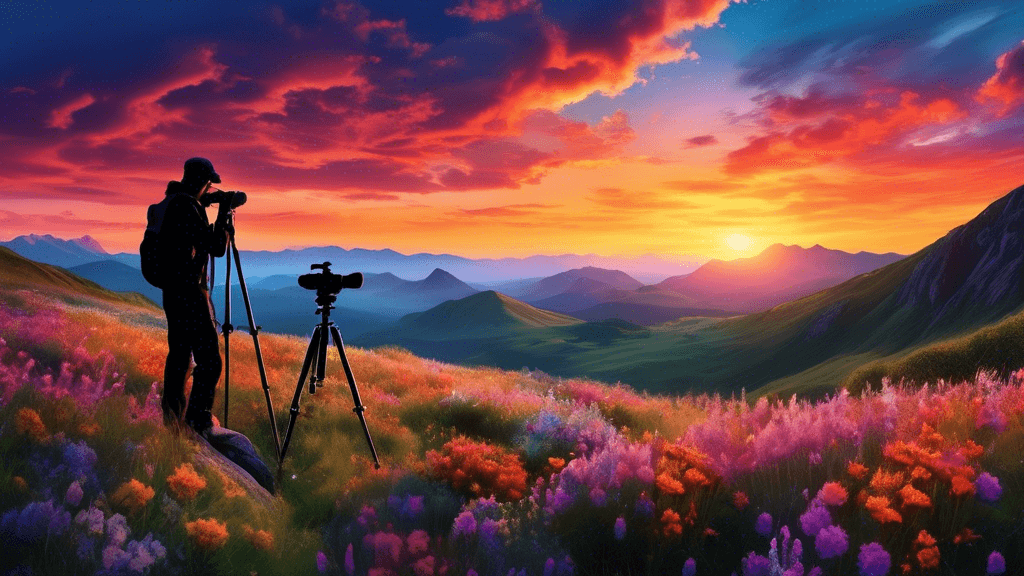
Capturing Stories: The Art of Landscape Photography
Share
The Art and Science of Landscape Photography
Landscape photography isn't just about snapping pretty scenes; it's a profound way to connect with nature and capture the stories etched in every vista. From towering mountains to sprawling deserts, each setting offers a unique narrative waiting to be told. This blog explores the multifaceted world of landscape photography, tailored for both beginners passionate about starting their journey and experienced photographers aiming to enhance their craft.
Understanding Landscape Photography
Landscape photography is more than the act of photographing natural scenes—it's an art form that requires an understanding of the environment, timing, light, and composition. But why does landscape photography captivate so many? This genre not only preserves the beauty of a moment but also invokes reflection on our planet’s environment, highlighting areas of natural wonder that need to be conserved.
Key Elements in Landscape Photography
- Composition: This refers to how elements are arranged within the frame. Good composition is essential to draw the viewer’s eye into the scene and guide them through the landscape naturally.
- Light: Natural light in landscape photography is not something you can control, but you can decide the most opportune moments to capture it. Understanding the golden hours of dawn and dusk can dramatically alter the mood and emotion of your photograph.
- Storytelling: Every landscape has a story, whether it's the way a river cuts through a valley or how a mountain range casts shadows over the plains at sunset. Effective landscape photographers use their medium to tell these stories, engaging their audiences deeply.
Techniques to Master in Landscape Photography
Improving your landscape photography technique involves both creative and technical aspects. Here are some refining strategies:
1. Mastering Light
Photography is essentially capturing light. Landscape photographers often chase the magic hours for the soft, golden tones they produce. But don’t shun overcast days or times of dramatic weather – these conditions can lead to powerful, emotive pictures with moody atmospheres.
2. Compositional Rules
Understanding and applying compositional rules can transform your photographs from good to breathtaking. The rule of thirds, leading lines, symmetry, and balance play crucial roles. Here's a take from Ansel Adams, a master of landscape photography: A good photograph is knowing where to stand.
3. The Importance of Patience
Landscape photography often requires waiting for the right moment when the light and the landscape interact perfectly. This could mean hours or even days of preparation and patience, reinforcing the entry of the determined photographer as part artist, part natural historian.
Enhancing Your Skills with Advanced Tools
Advancing in landscape photography means familiarizing yourself with a variety of tools that can enhance your ability to capture stunning imagery:
- Filters: Neutral density (ND) filters and polarizing filters can help manage difficult lighting conditions and bring out the rich, true colors of a natural scene.
- Long Exposure: Using a tripod and long exposure times allows photographers to create silky-smooth effects on moving water or capture the movement of clouds against a static landscape, adding a surreal or ethereal quality to the image.
- Post-Processing Techniques: Post-processing is crucial in landscape photography. It allows photographers to tweak colors, adjust contrasts, and highlight specific aspects of the image to align with the story or emotion they want to convey. All are done without undermining the natural beauty of the shot.
Connecting with the Landscape
Perhaps one of the most profound lessons in landscape photography is learning how to connect with the environment. Being present and appreciative of the natural world not only makes for better images but fosters a deeper respect and urgency for its conservation. It's a powerful way to use art to speak on behalf of places that cannot speak for themselves and to tell the stories of the earth.
Conclusion
Landscape photography is an enriching endeavor that challenges the photographer to dive deep into the complexities of nature, light, and timing. It's about capturing the beauty and narrative that natural landscapes offer. For those who heed the call, it provides a means to communicate the grandeur and fragility of our world. Embrace the challenge, and let every capture be a tribute to the profound beauty of our planet.
Are you ready to tell compelling stories through your lens? Embrace the journey of landscape photography and contribute to the preservation of our magnificent world with every shot you take.





